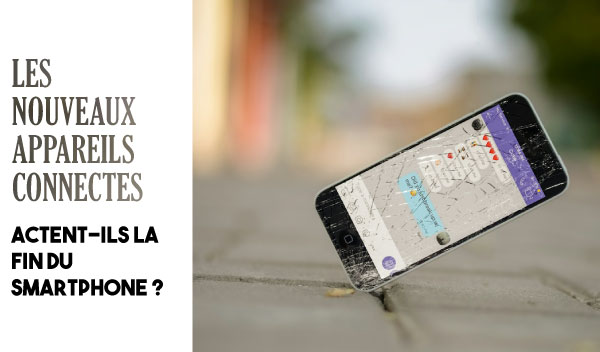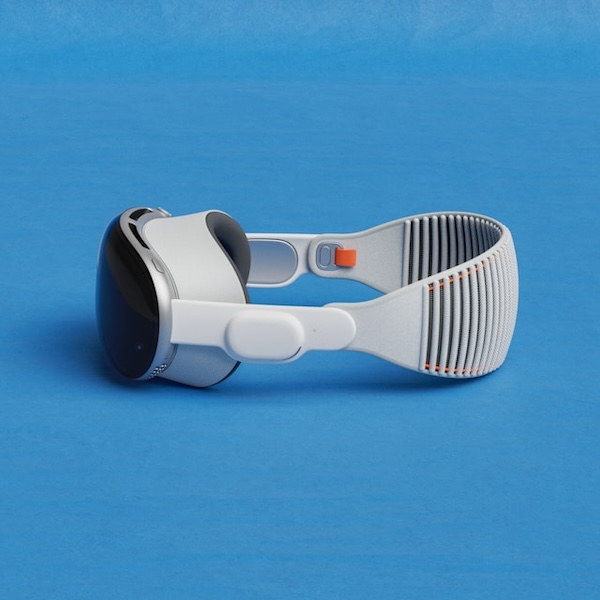FILE: Do new connected devices mark the end of the smartphone?

At the dawn of a new technological era, the rise of new connected devices calls into question the central role of smartphones in our daily lives. These innovative gadgets, ranging from wearables to intelligent voice assistants, offer an enriched and more integrated user experience. While smartphones have dominated the digital landscape for years, the arrival of these sophisticated devices is opening a debate about how our interaction with mobile technology will evolve in the future.
The rise of new connected devices
The decline of smartphones is illustrated by a 3.2% drop in sales in 2023, revealing a saturated market and a lack of significant innovations. This slowdown highlights a change in consumer trends and the maturation of the smartphone market, which has become too expensive, too heavy, too cumbersome. Now, new connected devices are ready to make your life easier. Watches, glasses, headsets, like the telephone, are among the traditional objects equipped with new digital technologies. But other objects are born in this context.

AI Pin, Rabbit R1 may be names you've never heard. However, these are our future digital companions , intended, among other things, to help us get rid of our smartphones. And professionals are now realizing this. Thus, in May 2022, the former CEO of Nokia, the Finn Pekka Lundmark shamelessly declared that by 2030 , the smartphone as we know it today will no longer be the most common interface. Many of these objects will be integrated directly into our bodies. » We think of brain implants from Neuralink, the start-up launched in 2016 by Elon Musk, which even promises to restore sight to the visually impaired…
The first AI Pin, this badge boosted with artificial intelligence created by the Humane brand, will be shipped in spring 2024. Simply attached to clothing, it is already described in the press as “the object that wants to kill the smartphone”. All is said. Another connected object has the same objective. This is the Rabbit R1, which consists of easier use of all the features of the smartphone while pushing further interaction with the integrated AI and at a much more affordable price. These objects promise to force us to review the way we integrate into the world of artificial intelligence by trying to eliminate the negative externalities of smartphones.
https: //www.youtube.com/watch?v=vp52L6UlmJY&ab_channel=rabbit
Innovations and Avant-Garde Visions
In France, sales of new smartphones decreased by 13% in 2023, reaching 13.6 million units, while their average price attenuated the decline in value to 4%, i.e. 7.7 billion euros. Above all, we have noted a continuous decline since January 2021 , exacerbated by inflation and a strong trend towards reconditioned devices, particularly in France and Germany. In fact, 1 in 5 smartphones sold in France is second-hand. Overall, refurbished smartphones generated $56.61 billion in 2023, or more than 17% of the total market.
https:// www.youtube.com/watch?v=XdAlAI9TLww&ab_channel=humane
In this context, so-called revolutionary technologies, such as wearables and AI personal assistants, are therefore positioning themselves as potential successors to traditional smartphones . This development suggests a shift towards more natural and immersive ways of interacting with digital technology, calling into question the future of the smartphone as a central tool in our digital lives.
Some experts share perspectives on the future of connected technologies. They envision a world where smartphones, although currently predominant, could be supplanted by more integrated and intuitive devices , like the ones we have just discovered. These predictions highlight a shift towards more natural interaction with technology, potentially marking a radical change in our relationship with digital devices.
In order to remain competitive, “legacy” smartphone manufacturers must therefore expand their range of products , thus creating complete ecosystems to retain their customers. Brands like Apple and Samsung , which have been battling for years in the smartphone space, are diversifying their offerings with connected accessories like smart watches and rings . Google, with its Android ecosystem and Pixel devices, is integrating AI to enrich the user experience. This diversification strategy, including innovative wearable products, therefore promises to redefine connectivity, offering more intuitive and immersive interactions with technology, and without requiring a smartphone.
Connected glasses have been widely acclaimed, and are still the subject of significant investments . Despite its prohibitive price, the Apple Vision Pro mixed reality headset, defined as a "spatial computer", contributes to this emergence of new connected devices intended, if not to make it disappear, to minimize dependence on the smartphone.[ =]

The Future of Connectivity at the Crossroads
The impact of new connected devices on the market and consumers is causing a transformation that is influencing the strategies of manufacturers seeking to diversify their products to create integrated ecosystems. For consumers, this means a greater variety of choices and new ways to interact with technology. Challenges include adapting to these innovations and managing privacy and security concerns in an evolving technology landscape .
Challenges to widespread adoption of These technologies also include cost, learning curve, and integration with existing ecosystems. We must also consider the future of the smartphone , which could evolve to remain relevant in this new technological ecosystem, potentially becoming a pivot for these connected technologies.
[ =]
The emergence of new connected devices and the integration of artificial intelligence are shaping a future where the smartphone may no longer be the dominant tool. Manufacturers must adapt to this shift by diversifying their offerings, while consumers must navigate this changing technological landscape. Challenges, such as cost and integration, must be addressed for widespread adoption, highlighting the importance of careful thinking about the future of connectivity.
Difficult however, to know which digital companion, among the dozens of new connected devices that will emerge in the coming years, will become the new "king of innovation", a place that our smartphones still occupy. The planned end of the smartphone is therefore indeed a credible prospective trend in the digital world , but it will only officially take place after the end of the trial and error that characterizes start-ups engaged in a frantic race towards digital omnipotence. . Glasses, which have gained a lot of market share in recent years, are well placed but are struggling to meet certain challenges, notably cost. Simple wearables will perhaps be the solution to answer this.
Sources: Le Monde., Statista, Rabbit, Humane


